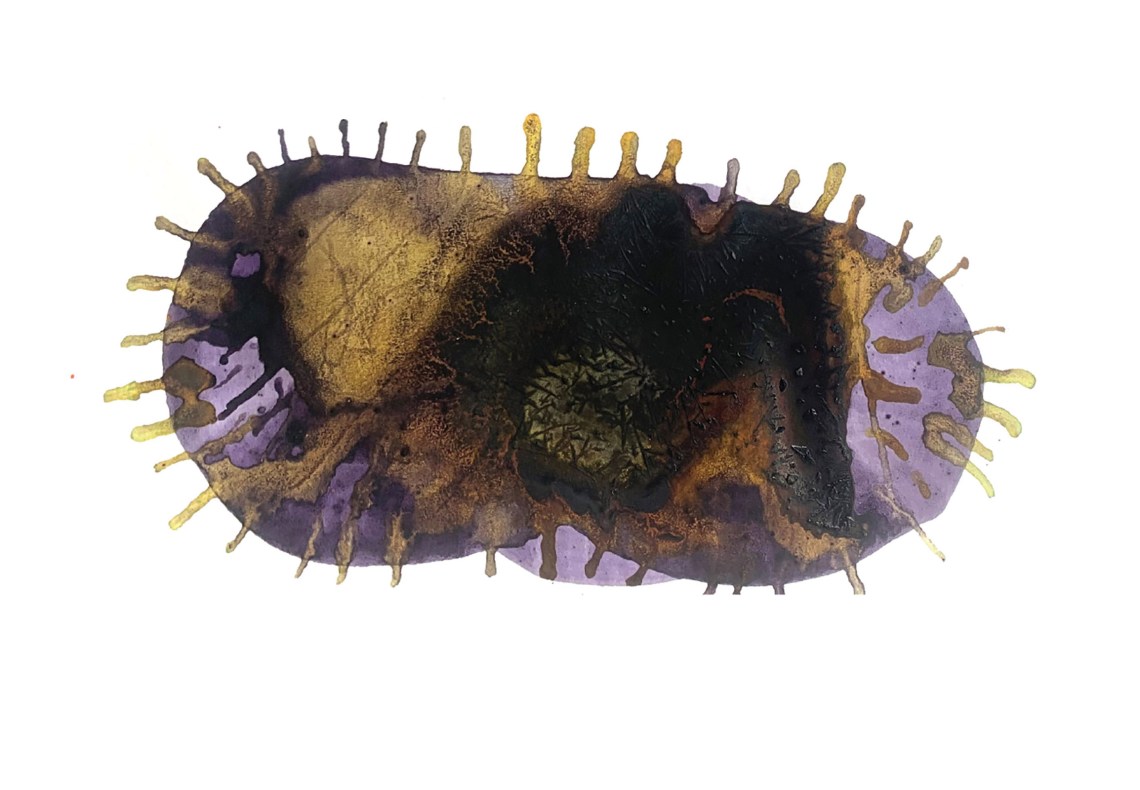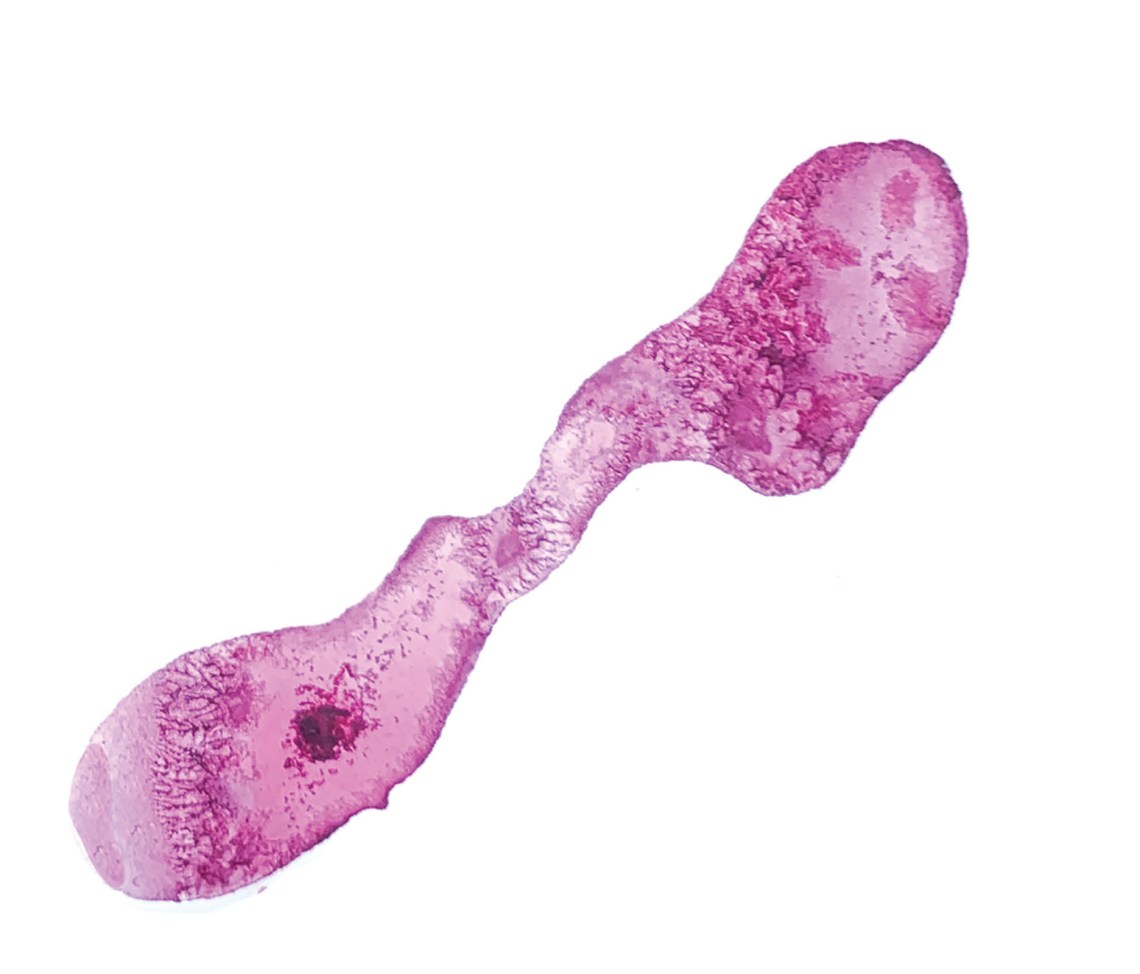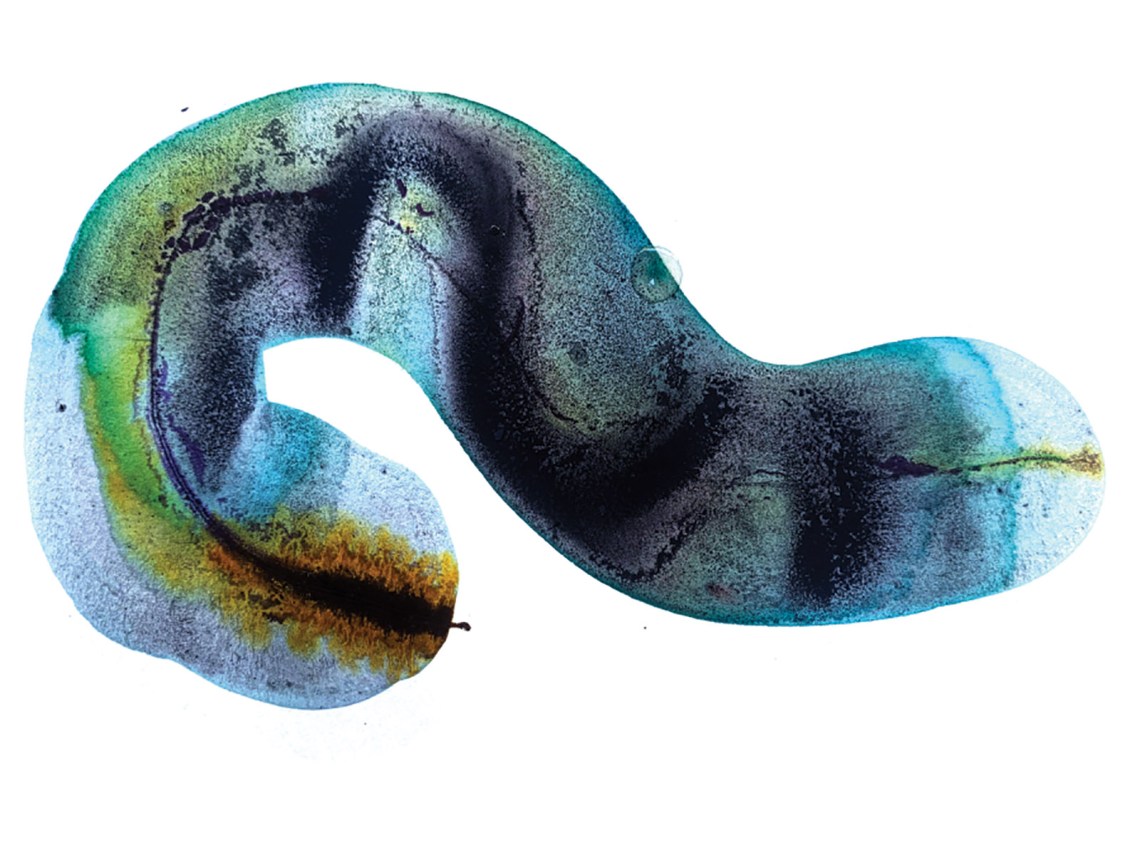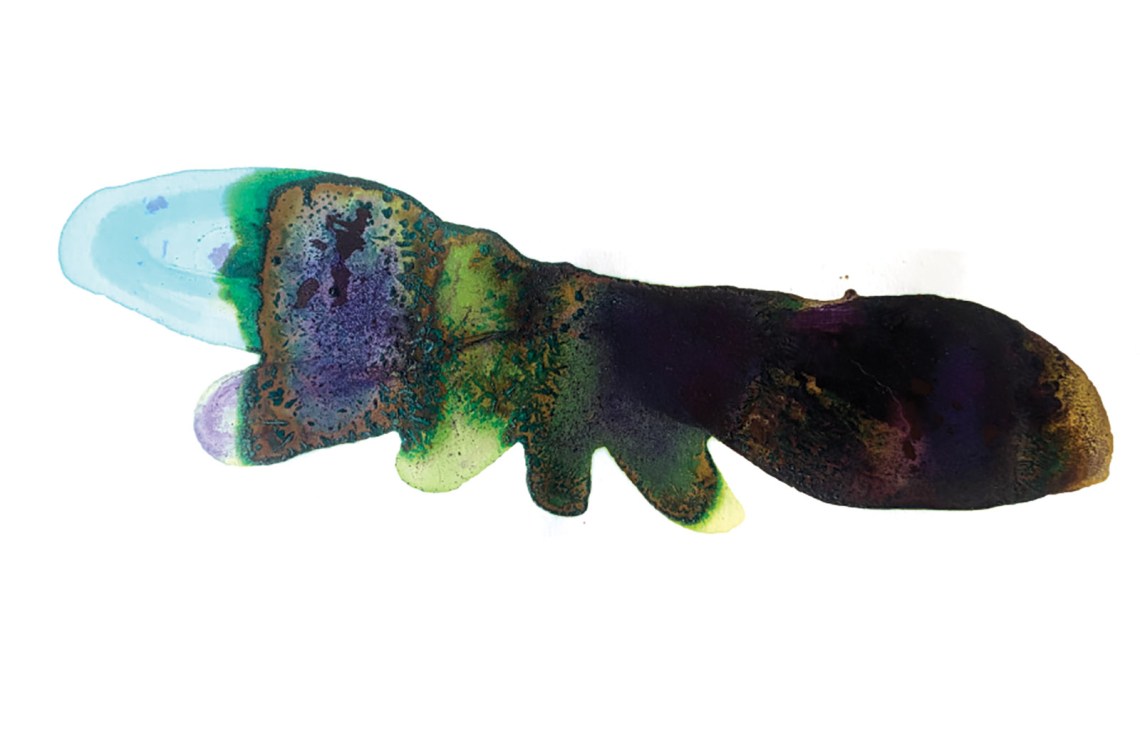We live life with companions. Some, like parents, are present from our moment of birth; others are met at school or work and become friends or spouses. These companions influence our behavior and emotions, and so contribute to our physical and mental health. But as Alessio Fasano and Susie Flaherty show in Gut Feelings, we also live life with an invisible companion: the microbiome, the trillions of microbes (bacteria, fungi, viruses, and occasionally protozoa and parasites) that inhabit our gastrointestinal tract and reside in our upper airway and skin. The products of these microorganisms are thought to modify the workings of our genes (a process called epigenetics) and to directly affect the functioning of our vital organs.
The microbiome is introduced to newborns through vaginal microbes during labor and then through maternal feeding, and it can change in composition; it may aid our physical growth, emotional balance, and cognitive development, as well as the maturation of our immune defenses. It may also become injured or dysfunctional, contributing to the rise of inflammatory disorders like Crohn’s disease or, some even speculate, neuropsychiatric syndromes like depression and autism. Yet despite the possibility that the microbiome plays such a crucial part in human biology, we typically live in ignorance of its effect on our lives.
Gut Feelings is a detailed and scientifically rigorous survey. Fasano, a pediatric gastroenterologist at Massachusetts General Hospital and professor at Harvard Medical School and Harvard’s T.H. Chan School of Public Health, and Flaherty, the director of communications at Mass General’s Center for Celiac Research and Treatment, scrupulously assess the many studies on the microbiome and human health with an echoing drumbeat of conditional terms, cautioning the reader that research in rodents may not be replicable in humans, and that correlations found in human populations or individual patients ultimately may not prove causative. Such caveats distinguish this book from popular works on nutrition that make exaggerated claims about how manipulating the microbiome can treat a variety of illnesses. Gut Feelings, by contrast, gives readers a clearer sense of the current state of medical knowledge.
Last February two reports appeared in the journal Science that moved research on the microbiome an important step forward. One report was from the Sheba Medical Center at Tel HaShomer, Israel, the other from the Hillman Cancer Center at the University of Pittsburgh. Both concerned clinical trials on manipulating the microbiome in patients with metastatic melanoma. Until recently, melanoma that had metastasized widely in the body was almost always fatal. But over the past decade a therapy was developed that causes immune cells to attack cancers, resulting in the survival of between 20 and 40 percent of patients. (The researchers who provided the groundwork for this treatment were awarded the Nobel Prize in 2018.) Conversely, some 60 to 80 percent of melanoma patients treated with immune therapy do not benefit from it. There is little else doctors can do for many of them.
Earlier studies indicated that the gut microbiome affects the maturation and functioning of rodents’ immune system; further research suggested that it could somehow make mice more responsive to immune therapy against cancers. In human patients, certain groups of gut bacteria were associated with improvement from immune therapy, but these correlations were inconsistent in different published studies. A study concerning fecal microbiota transplantation (FMT)—which involves transferring gut microbes from one host to another—found that immune therapy was more effective in mice that had received FMT from melanoma patients who responded to the treatment when compared with mice that had received FMT from patients resistant to it.
Laboratory mice used in such experiments are typically inbred, genetically homogeneous, and of the same age, and they lack any history of illness or trauma; human patients are genetically diverse, are of various ages, and have many physiological differences, some of which result from prior trauma like surgery, concurrent medical conditions, or toxic treatments such as chemotherapy. Could a microbiome-based intervention overcome some patients’ resistance to a potentially lifesaving treatment?
The research groups in Israel and Pittsburgh conducted clinical trials of FMT in melanoma patients who had not responded to repeated courses of immune therapy. Ten patients were enrolled in the Israeli study, sixteen in the American one. While there were some differences in the protocols of the two trials, they had similar strategies: to obtain samples of the gut microbiome of people who had clearly benefited from immune therapy for melanoma, and then transfer their microbes into resistant patients. In Israel one patient withdrew from the study; of the remaining nine, one showed complete disappearance of all the metastases, and two others showed significant shrinkage but not full disappearance. In these three patients, who had received FMT from the same donor, immune cells were actively invading their metastases—a sign that the therapy was now working. In Pittsburgh, the cancer of one resistant recipient completely disappeared after FMT, two patients’ cancers shrunk significantly, and in three the cancer didn’t shrink but stopped growing. All these positive results were sustained for more than twelve months. The FMT procedure caused no harm in any of the patients.
Advertisement
Despite the relatively small numbers of participants in the trials, they provide a proof of principle: a certain microbiome can overcome resistance to potentially lifesaving immune therapy. The next steps for researchers are clear: treat larger numbers of such melanoma patients; refine the protocols to benefit a greater proportion of patients; see if FMT can overcome resistance to immune therapy in patients with other types of cancer, like lung cancer and lymphoma; and try to identify which of the hundreds of species in the microbiome instruct a cancer patient’s immune system to respond to the therapy.
About two months after these articles were published in Science, another noteworthy advance on the microbiome appeared. Here the issue was how to help children suffering from severe malnutrition in the developing world. Dr. Jeffrey Gordon and his team at Washington University School of Medicine in St. Louis have studied the microbiomes of malnourished children with the hope of identifying how an “injured” microbiome limits their growth and development. In April the New England Journal of Medicine published the results of a randomized trial in the Mirpur district of Dhaka, Bangladesh. The trial, led by Gordon’s group, compared the effects of two therapeutic foods. One, termed “ready to use,” is the current nutritional supplement used to treat millions of malnourished children globally; it includes rice, powdered milk, and lentils. The other was an experimental concoction composed of chickpeas, bananas, soy flour, and peanuts. Gordon’s team had previously shown that the concoction could facilitate the growth of stunted mice whose intestines had been colonized with stool samples obtained from a malnourished child, suggesting that this food alone could remedy the deficiency of the child’s microbiome, without the use of FMTs.
In the Dhaka trial, moderately or severely malnourished children randomly received either the standard ready-to-use therapeutic food mix or the concoction that was designed to target the microbiome and had aided the rodents. One hundred eighteen children completed the study. For children twelve to eighteen months old, two important criteria for growth1 were clearly superior in the children who had received the experimental concoction. In addition, blood tests showed that those children had higher levels of plasma proteins, which are involved in bone growth and in the development of the central nervous system. Important questions remain, particularly whether the measured benefit to the children’s growth will continue, whether the predicted improvement in their neural development will come to pass, and exactly which components of the microbiome are targeted by the successful supplement. But again, a proof of principle was made: the gut microbiome is relevant in childhood malnutrition, one of the most urgent global health issues, and the current standard dietary interventions can be made far more effective.
Gut Feelings provides readers with the rich historical background to the recent papers in Science and the New England Journal of Medicine. Fasano and Flaherty write:
The use of FMT to treat a variety of human diseases, mainly gastrointestinal problems, dates back to fourth-century China, where “yellow soup” was used in cases of severe food poisoning and diarrhea. By the sixteenth century, the Chinese had developed a variety of feces-derived products for gastrointestinal complaints as well as systemic symptoms such as fever and pain. Anecdotal reports suggest that Bedouin groups consumed the stools of their camels as a remedy for bacterial dysentery. Italian anatomist and surgeon Fabricius Acquapendente (1537–1619) further extended this to a concept he called “transfaunation,” the transfer of gastrointestinal contents from a healthy to a sick animal, which has since been applied extensively in the field of veterinary medicine. Interestingly, many animal species are found to naturally practice coprophagy, a sort of self-administered FMT, leading to a greater diversity of microorganisms in their intestine.
FMT was first accepted by Western medicine in 1958, as a treatment for pseudomembranous colitis, a severe form of diarrhea caused by the bacterium C. difficile. This treatment seemed like a logical application of FMT practices that had been around for centuries, and it was the only successful use of FMT in the West until this year.
As Fasano and Flaherty explain, empirical findings suggest that the rising incidence in the developed world of inflammatory disorders like Crohn’s disease and pediatric food allergies might be tied to changes in the microbiome: “The gut microbiome in people from industrialized countries seems to contain 15 to 30 percent fewer species when compared with the gut microbiome of people from non-Western nations.” One possible explanation for this, proposed by Dr. Martin Blaser, an eminent infectious diseases specialist at Rutgers, is that widespread use of antibiotics has damaged particular bacterial species of our ancestral microbiota. This alteration in our microbiome might impede our immunological, metabolic, and cognitive development, setting the stage for chronic inflammatory disorders.2
Advertisement
Blaser further posits that the interplay of the microbiome and our genes affects our bodies’ ability to suppress inflammatory maladies when they do appear. This, Fasano and Flaherty write, “may hold the key to understanding how a potential genetic predisposition to a particular disease may become an actual clinical outcome in any given person.” In addition to antibiotics, diet can alter the gut microbes, as seen in some studies comparing hunter-gatherer populations with urban dwellers who eat many processed foods.
But Fasano and Flaherty again emphasize that findings supporting Blaser’s hypotheses are inconclusive, and they refrain from endorsing the theory:
We might never settle the question of the extinction of ancient microbes versus lifestyle adaptation. But it becomes fairly obvious that the gut microbiome of rural populations that embrace a sustainable lifestyle, meaning that they live only on products from their immediate natural environment, is substantially different from the gut microbiome composition of people living in industrialized countries. Determining whether these differences are the cause of the current epidemic of chronic inflammatory diseases, or the consequence of these diseases, or merely an epiphenomenon, remains one of the most thought-provoking challenges faced by scientists interested in the role of the human microbiome in health and disease.
The microbiome changes not only from person to person but throughout an individual’s lifetime, and researchers are faced with its daunting complexity. Humans have approximately 23,000 genes, but, Fasano and Flaherty write, “we are the product of the coevolution of our genome with the metagenome (the gene array from our microbiome), which contains from 100 to 150 times more genes than we do.” The expression of these genes can be affected by what people eat and are exposed to in their environment, making it even harder to gain a proper understanding of just how the microbiome interacts with the rest of our bodies and how it can be manipulated.
Moreover, Fasano and Flaherty highlight the complexity of our microbiome by challenging the very concept of what constitutes a “normal” population of GI organisms:
The aim of finding a “normal” microbiome by sequencing the microorganisms at any human site—for example, the gut—is probably not a useful goal. Many microbiome scientists are now convinced that there is no such thing as a normal microbiome. By the time the sequencing is completed, the site’s ecosystem could be very different in that individual, subject to the influence of environmental and other factors.
They note that viruses reside in the gut and can transfer genes from one bacterium to another, creating “even more variability in the function of a specific site’s microbiome over time, even if the composition of the microbiome remains the same.”
This complex biology, and our ignorance of it, have not restrained producers of “natural” remedies like probiotics—bacteria-rich foods, such as yogurt and kombucha, that are said to improve the functioning of the microbiome. Probiotics are a multibillion-dollar industry, and there is shocking negligence in how these products are marketed. Fasano and Flaherty highlight arguments made by Claudio de Simone, a pioneer in the field of probiotics, who asserts that regulators in the EU and the US fail to take into account the complex composition of probiotics products, which are living microbes and thus biologically dynamic, vary widely among species and strains, and may interact differently with one another. These concerns call into question the safety and reliability of probiotics, and are particularly acute among “vulnerable populations,” such as patients with suppressed immune systems or those whose medications could be rendered less effective by probiotics.
Fasano and Flaherty write (no doubt drawing on Fasano’s experience as a professor of pediatrics), “It is now rare to see children in clinic who have not been exposed to probiotics.” He and Flaherty warn that
the wide use of probiotics, without clear indications and formulations, may jeopardize this potentially effective tool to modify the microbiome’s composition and function to support immune health and gut barrier integrity or to treat specific inflammatory processes…. Because humans are not made genetically and biologically equal, we cannot generalize the use of any given probiotic formulation as beneficial to everyone’s health.
Rigorous studies support Fasano and Flaherty’s criticisms. Two reports in the November 22, 2018, issue of the New England Journal of Medicine featured clinical trials of probiotics.3 One tested infectious diarrhea in children brought to the emergency department and found that the administration of a probiotic did not prevent the development of moderate to severe gastroenteritis within fourteen days. The other study used an over-the-counter probiotics preparation available in the United States and showed no benefit compared to a placebo in limiting diarrhea and vomiting, the number of unscheduled health care visits, or attendance at day care. “While these results cannot be generalized to other probiotic strains or preparations,” Fasano and Flaherty write, “they do show that we have far to go in elucidating which probiotics might provide benefits in which patients and clinical settings.”
The appeal of manipulating gut microbes in lieu of traditional drug therapies is clear: it is a supposedly natural and presumably nontoxic intervention that might be able to address unmet clinical needs. This has spawned claims, based on scant empirical data, about using the microbiome to treat autism or severe depression. Gut microbes produce molecules like serotonin and dopamine that act on the brain, but this doesn’t mean they can be readily harnessed therapeutically. Nonetheless, scores of biotech companies have been launched to produce therapies exploiting gut bacteria for disorders ranging from schizophrenia to Parkinson’s disease. Recently, the biotech company Seres announced the failure of a clinical trial involving microbiome therapy for a signature inflammatory disease of the bowel, ulcerative colitis. This was a profound disappointment and cast a pall over other efforts in the field. Patients and their families are understandably desperate for new approaches to treating these conditions, making them vulnerable to unscrupulous uses of fecal transplants that are not proven by rigorous clinical trials.
Fasano and Flaherty depict people as the product of two coevolving genomes, but they rightly acknowledge that socioeconomic factors, “including health disparities and poor access to health care,” can negatively affect the microbiome. They warn against attributing too many illnesses to bad microbial health; we can’t ignore poverty, discrimination, air pollution, lack of access to nutritious foods, and other societal ills that influence diet and behavior, since these too can be major contributors to chronic diseases, like obesity and asthma, that disproportionately affect underprivileged communities.
What then should be done to advance the study of the microbiome? Fasano and Flaherty begin their answer to this question by detailing its current pitfalls:
Growth in this field is challenged by the narrow focus of individual studies, small sample size, lack of standardization, and, most important, cross-sectional study design comparing patients affected by any given disease to matched healthy controls.
Again, they note that comparing patients’ microbiomes rests on the assumption that “healthy subjects, by default, harbor a ‘normal microbiome’ considered as an ideal target to maintain health. However, there is no clear understanding of a ‘normal’ microbiome.” Each individual likely develops a microbiome that is healthy for that person but might not be for someone else. If this is true, then aiming to remedy chronic inflammatory disorders, like Crohn’s disease, by manipulating the microbiome will have to be done in a personalized rather than generic way.
The studies in melanoma patients and in malnourished children appeared after Gut Feelings was written, and they provide a pathway to progress. They show that despite the daunting biological complexity of the microbiome, well-designed clinical trials based on even an incomplete understanding of it can yield interventions that dramatically improve human health and ameliorate illness. It is doubtful that every such well-designed clinical trial will succeed; indeed, advances in science often are built on failure. But the studies’ results—overcoming resistance to a potent cancer therapy and boosting weight gain in severely malnourished children—show how much can be gained by viewing the microbiome as our companion in health and well-being.
This Issue
October 21, 2021
The Storyteller
‘Who Designs Your Race?’
Are the Kids All Right?
-
1
Weight-for-age and weight-for-length z score. Z score, the standard deviation above or below the mean, is used by WHO and other groups for children at the extremes of the weight spectrum. ↩
-
2
See Martin J. Blaser, Missing Microbes: How the Overuse of Antibiotics Is Fueling Our Modern Plagues (Henry Holt, 2014); and Michael Specter, “Germs Are Us,” The New Yorker, October 22, 2012. ↩
-
3
Stephen B. Freedman et al., “Multicenter Trial of a Combination Probiotic for Children with Gastroenteritis,” and David Schnadower et al., “Lactobacillus rhamnosus GG versus Placebo for Acute Gastroenteritis in Children.” ↩








